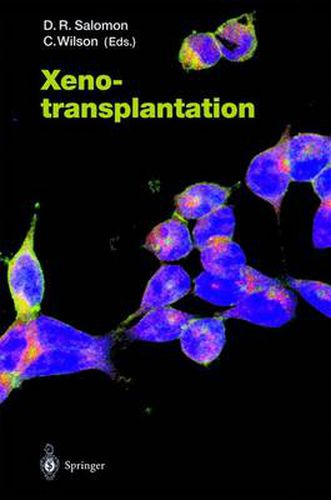Readings Newsletter
Become a Readings Member to make your shopping experience even easier.
Sign in or sign up for free!
You’re not far away from qualifying for FREE standard shipping within Australia
You’ve qualified for FREE standard shipping within Australia
The cart is loading…






This title is printed to order. This book may have been self-published. If so, we cannot guarantee the quality of the content. In the main most books will have gone through the editing process however some may not. We therefore suggest that you be aware of this before ordering this book. If in doubt check either the author or publisher’s details as we are unable to accept any returns unless they are faulty. Please contact us if you have any questions.
Xenotransplantation could have an impact on at least three aspects of medicine. The first is as a means of overcoming a severe shortage of human donor organs for the treatment of organ failure. The second aspect relates to the possibility that a xenogeneic organ would not be susceptible to infection by a human virus and thus the xenograft might resist injury caused by such viruses. The third and, as of yet, unexplored aspect relates to a means of delivering genes for therapeutic purposes thus overcoming some of the limitations of conventional gene therapy.
$9.00 standard shipping within Australia
FREE standard shipping within Australia for orders over $100.00
Express & International shipping calculated at checkout
This title is printed to order. This book may have been self-published. If so, we cannot guarantee the quality of the content. In the main most books will have gone through the editing process however some may not. We therefore suggest that you be aware of this before ordering this book. If in doubt check either the author or publisher’s details as we are unable to accept any returns unless they are faulty. Please contact us if you have any questions.
Xenotransplantation could have an impact on at least three aspects of medicine. The first is as a means of overcoming a severe shortage of human donor organs for the treatment of organ failure. The second aspect relates to the possibility that a xenogeneic organ would not be susceptible to infection by a human virus and thus the xenograft might resist injury caused by such viruses. The third and, as of yet, unexplored aspect relates to a means of delivering genes for therapeutic purposes thus overcoming some of the limitations of conventional gene therapy.